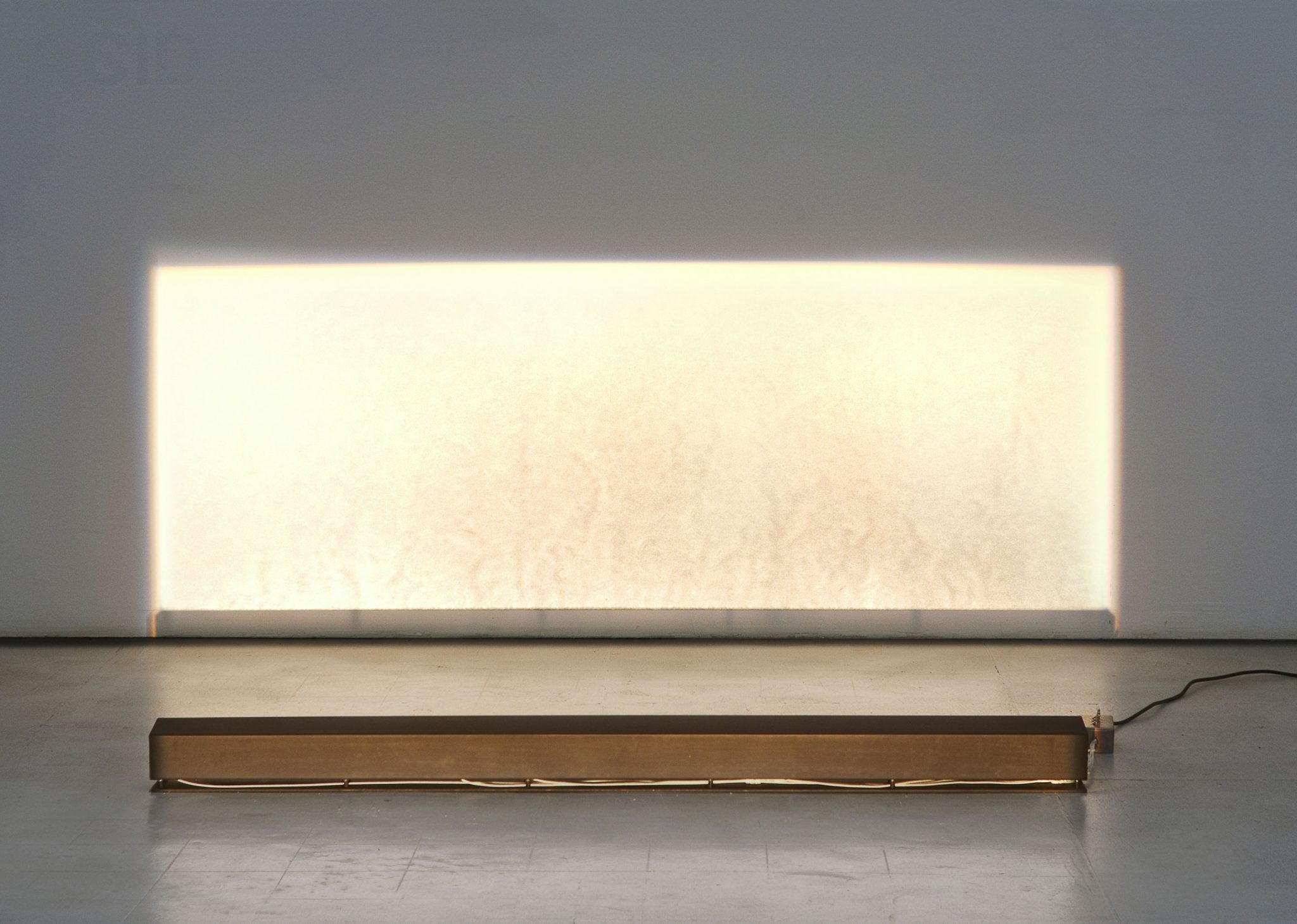Over the past two decades, Carsten Nicolai – musician, artist and cofounder of seminal 1990s minimal electronic music label Raster-Noton – hasn’t changed much about his aesthetic sensibility. Using a minimalist, glaring white laboratory coolness and applying this tone throughout his work, the German multitasker has done his fair share in popularising a version of digital realism in electronic audiovisual art.
This work is mainly concerned with phenomena at the extremes of perception and scale – particularly, for Nicolai, things that are ‘increasingly removed from the lived experience’. According to the exhibition press release, as one ascends the three floors, the further from lived experience one gets.
The top floor is taken up by a surround- sound work involving four tripod-mounted speakers, entitled Particle Noise (2013), and a series of prints, Traces (2007), showing closeup shots of what look like magnetised iron filings. Featuring a Geiger counter hooked up to an amplifier via a computer, Particle Noise produces something similar to glitch music – a subgenre of 1990s electronic music that used technical faults in digital technology as its sound palette (no surprise here, as Nicolai was an important proponent of glitch). Nicolai regularly invokes science as informing his work, so in terms of methodology, this could be an example of confirmation bias: you will find what you desire to find, because you’ve set up a situation where that’s all that can happen. So background radiation (that of Ibid, at least) sounds quite familiar, after processing.
On the second floor are more prints: cottony-looking clouds, as photographed above from a high-altitude aeroplane. Future Past Perfect Pt. 04 (Stratus) (2013), an HD movie shown on a monitor on a plinth, captures the same clouds, just discernibly moving, then cross-fading to other clouds. The effect is icily calm, though that effect is offset by the extent to which the work resembles a screensaver.
The ground floor – back to lived experience – features a series of prints titled Wismut (Dust) (2013), microscopic photographs of presumably just that. The dust is seductive, looking like a blanket of shimmering black pearls. There’s a piece called Thermic (2011), a battered spotlight set on the floor, shining a framed rectangle of light against the wall. The light passes over an electric strip heater, revealing the oily-looking heatwaves produced by the element below. It’s a simple but effective illustration, and also stands out in contrast to the other work on show here:
it’s ramshackle like a school science experiment. It’s not an open-ended project that’s taking place here, but an ongoing formatting and framing of the world. This is about containment rather than discovery. It’s not necessarily a bad thing, but it won’t reveal anything new. As hinted at in Thermic, the electronic landscape isn’t so clean and distanced, and is more lived in than previously imagined.
This article was first published in the May 2013 issue.
